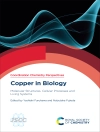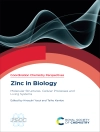Helmut Sigel, Astrid Sigel and Roland K.O. Sigel, in close
cooperation with John Wiley & Sons, launch a new Series
‘Metal Ions in Life Sciences’. The philosophy of the
Series is based on the one successfully applied to a previous
series published by another publisher, but the move from
‘biological systems’ to ‘life sciences’
will open the aims and scope and allow for the publication of books
touching on the interface between chemistry, biology, pharmacology,
biochemistry and medicine.
Volume 2 focuses on the vibrant research area concerning
nickel as well as its complexes and their role in Nature. With more
than 2, 800 references and over 130 illustrations, it
is an essential resource for scientists working in the wide range
from inorganic biochemistry all the way through to medicine.
In 17 stimulating chapters, written by 47
internationally recognized experts, Nickel and Its Surprising
Impact in Nature highlights critically the biogeochemistry
of nickel, its role in the environment, in plants and
cyanobacteria, as well as for the gastric pathogen Helicobacter
pylori, for gene expression and carcinogenensis. In addition,
it covers the complex-forming properties of nickel with amino
acids, peptides, phosphates, nucleotides, and nucleic acids. The
volume also provides sophisticated insights in the recent progress
made in understanding the role of nickel in enzymes such as
ureases, hydrogenases, superoxide dismutases, acireductone
dioxygenases, acetyl-coenzyme A synthases, carbon monoxide
dehydrogenases, methyl-coenzyme M reductases…and it reveals the
chaperones of nickel metabolism.
İçerik tablosu
1 BIOGEOCHEMISTRY OF NICKEL AND ITS RELEASE INTO THE
ENVIRONMENT (Tiina M. Nieminen, Liisa Ukonmaanaho, Nicole
Rausch, and William Shotyk).
2 NICKEL IN THE ENVIRONMENT AND ITS ROLE IN THE METABOLISM OF
PLANTS AND CYANOBACTERIA (Hendrik Küpper and Peter M.
H. Kroneck).
3 NICKEL ION COMPLEXES OF AMINO ACIDS AND PEPTIDES
(Teresa Kowalik-Jankowska, Henryk Kozlowski, Etelka Farkas, and
Imre Sóvágó).
4 COMPLEX FORMATION OF NICKEL(II) AND RELATED METAL IONS WITH
SUGAR RESIDUES, NUCLEOBASES, PHOSPHATES, NUCLEOTIDES, AND NUCLEIC
ACIDS (Roland K. O. Sigel and Helmut Sigel).
5 SYNTHETIC MODELS FOR THE ACTIVE SITES OF
NICKEL-CONTAINING ENZYMES (Jarl Ivar van der Vlugt and Franc
Meyer).
6 UREASE: RECENT INSIGHTS ON THE ROLE OF NICKEL
(Stefano Ciurli).
7 NICKEL IRON HYDROGENASES (Wolfgang Lubitz, Maurice
van Gastel, and Wolfgang Gärtner).
8 METHYL-COENZYME M REDUCTASE AND ITS NICKEL CORPHIN COENZYME
F430 IN METHANOGENIC ARCHAEA (Bernhard Jaun and
Rudolf K. Thauer).
9 ACETYL-COENZYME A SYNTHASES AND NICKEL-CONTAINING CARBON
MONOXIDE DEHYDROGENASES (Paul A. Lindahl and David E.
Graham).
10 NICKEL SUPEROXIDE DISMUTASE (Peter A. Bryngelson
and Michael J. Maroney).
11 BIOCHEMISTRY OF THE NICKEL-DEPENDENT GLYOXALASE I
ENZYMES (Nicole Sukdeo, Elisabeth Daub, and John F.
Honek).
12 NICKEL IN ACIREDUCTONE DIOXYGENASE (Thomas C.
Pochapsky, Tingting Ju, Marina Dang, Rachel Beaulieu, Gina M.
Pagani, and Bo Ou Yang).
13 THE NICKEL-REGULATED PEPTIDYL PROLYL
CIS/TRANS ISOMERASE Sly D (Frank Erdmann and
Gunter Fischer).
14 CHAPERONES OF NICKEL METABOLISM (Soledad
Quiroz, Jong K. Kim, Scott B. Mulrooney, and Robert P.
Hausinger).
15 THE ROLE OF NICKEL IN ENVIRONMENTAL ADAPTATION OF
THE GASTRIC PATHOGEN HELICOBACTER PYLORI
(Florian D. Ernst, Arnoud H. M. van Vliet, Manfred Kist,
Johannes G. Kusters, and Stefan Bereswill).
16 NICKEL-DEPENDENT GENE EXPRESSION (Konstantin
Salnikow and Kazimierz S. Kasprzak).
17 NICKEL TOXICITY AND CARCINOGENESIS (Kazimierz S.
Kasprzak and Konstantin Salnikow).
SUBJECT INDEX.
Yazar hakkında
Astrid Sigel has studied languages and was an editor of the
Metal Ions in Biological Systems series (until Volume 44)
and also of the Handbooks on Toxicity of Inorganic Compounds
(1988), on Metals in Clinical and Analytical Chemistry
(1994; both with H.G. Seiler), and on Metalloproteins (2001;
with Ivano Bertini) (Dekker, New York).
Helmut Sigel is Emeritus Professor (2003) of
Inorganic Chemistry at the University of Basel, Switzerland, and a
previous editor of the MIBS series until Volume 44. He
serves on various editorial and advisory boards, published over 300
articles on metal ion complexes of nucleotides, coenzymes, and
other ligands of biological relevance, and lectured worldwide. He
was named Protagonist in Chemistry (2002) by ICA
(issue 339); among further honors are the P. Ray Award
(Indian Chemical Society, of which he is also an Honorary Fellow),
the Werner Award (Swiss Chemical Society), a Doctor of
Science honoris causa degree (Kalyani University, India),
appointments as Visiting Professor (e.g., Austria, China,
UK) and Endowed Lectureships.
Roland K.O. Sigel is Assistant Professor (2003) of
Inorganic Chemistry at the University of Zürich, Switzerland,
endowed with a Förderungsprofessur of the Swiss
National Science Foundation. He received his doctoral degree
summa cum laude (1999) from the University of Dortmund,
Germany, working with Bernhard Lippert; thereafter he spent nearly
three years at Columbia University, New York, USA, in the group of
Anna Marie Pyle (now Yale University); during the six years abroad
he received several fellowships from various sources. His research
focuses on the structural and catalytic role of metal ions in
ribozymes, especially group II introns, and on related topics. He
was also an editor of Volumes 43 and 44 of the MIBS
series.












